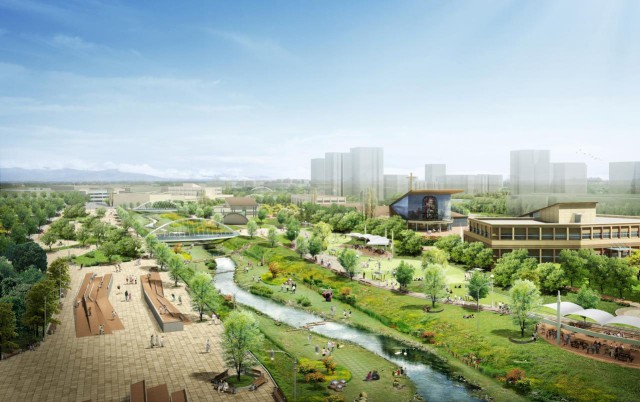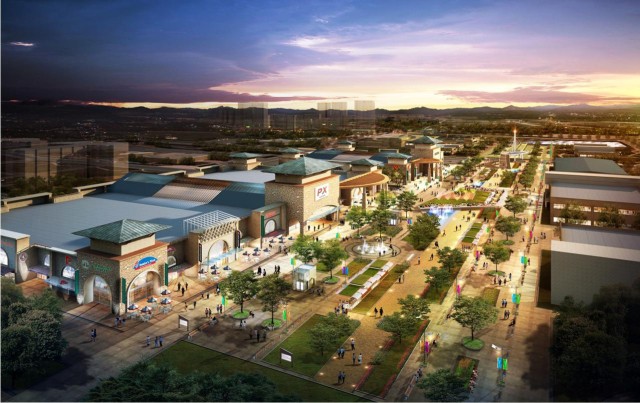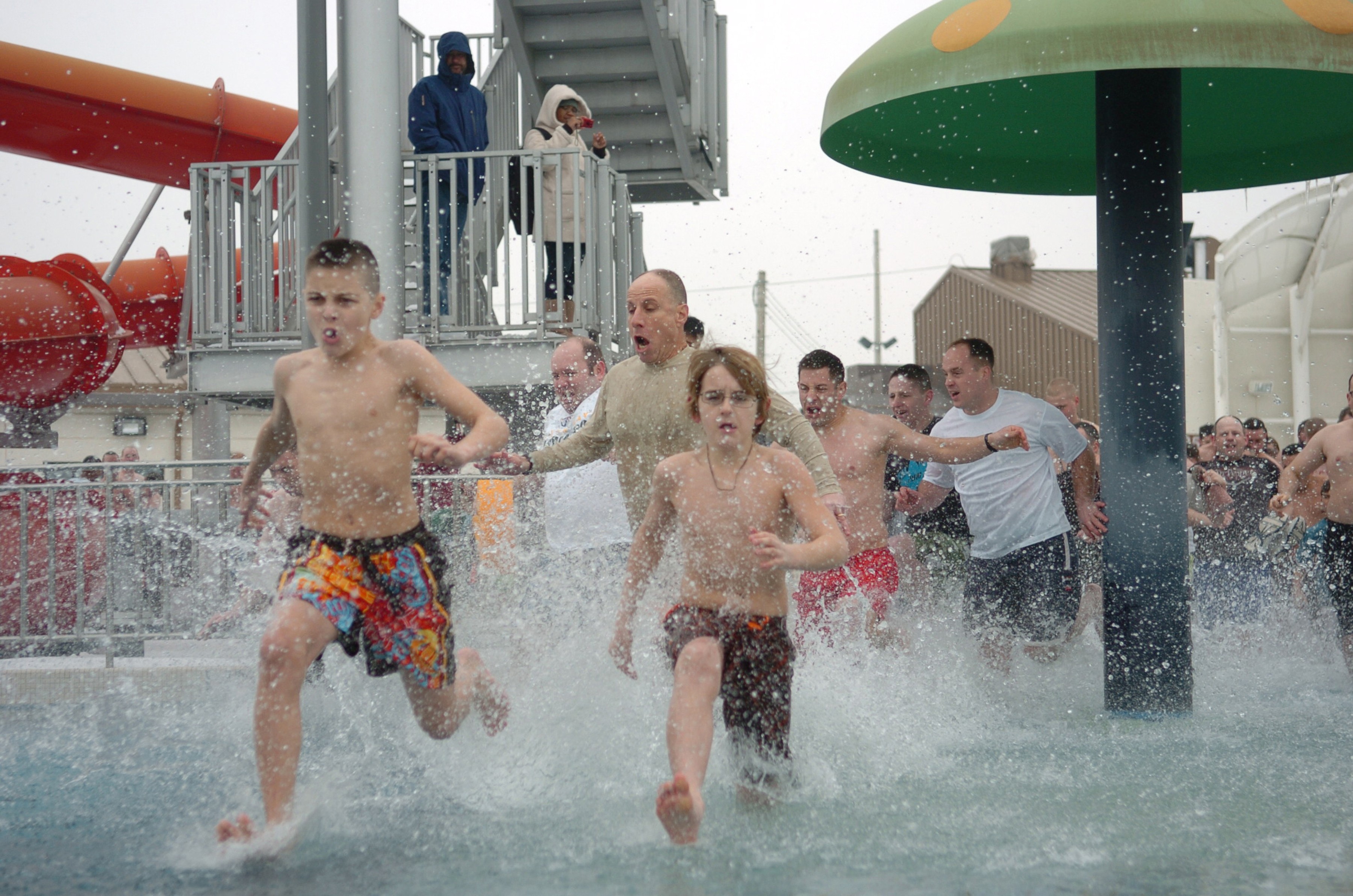IF you build it, they will come."
The massive military community rising from the rice paddies in South Korea dwarfs anything Kevin Costner's character might have envisioned in the movie "Field of Dreams."
The old Camp Humphreys is transforming from a quiet aviation base off the beaten track from Pyongtaek into a major hub for U.S. forces in South Korea. It's part of a major realignment of the 28,500 servicemembers in Korea, with nearly all of them scheduled to move south of the Han River within the next several years.
All but a tiny residual force will leave U.S. Army Garrison Yongsan, current home to U.S. Forces Korea and Combined Forces Korea in the heart of Seoul, and the 2nd Infantry Division and its supporting elements will relocate from Camp Casey and its tiny satellite bases north of the capital.
Most will consolidate at Camp Humphreys, where a U.S. military base is being built that's unlike anything ever seen before on the Korean peninsula.
The project is moving forward, full speed ahead, Gen. Walter "Skip" Sharp, commander of U.S. Forces Korea, reported to the House Armed Services Committee in March.
"We are on track, over the next five or six years, to complete all of the construction down there," he told the panel. "We will actually start moving down there in 2012, and then phase that in over the next several years following that."
Sharp resisted setting a definitive timetable for completion, but said the effort is on the fast track.
"We're trying to do it as quickly as possible, to be able to return this land to the Republic of Korea and to consolidate our forces to improve the quality of life for our servicemembers," he told Congress.
At Humphreys, Col. Joseph Moore, the garrison commander, gets excited talking about the enormity of the project and the unprecedented quality of life it will offer.
Initial plans called for the post's population to more than quadruple from the current 10,000, which includes 4,200 military members and about 2,500 U.S. civilian employees, contractors and Family members. But a new dynamic added to the mix just as the relocation plan was being launched-the normalization of tours in South Korea-is expected to further increase the scope of the project, Moore said.
Defense Secretary Robert M. Gates announced in December the extension of tour lengths in Korea. Under the normalization plan, single servicemembers will serve two-year tours, and married troops who bring their Families will stay for three years.
So instead of about 1,900 Family members currently here, and about 15,000 expected to arrive as U.S. forces relocate south and more command-sponsored slots are offered, Moore estimates that the post ultimately could become home to as many as 30,000 Family members, swelling the base's total population to more than 62,000.
Bulldozers are busy at work preparing for their arrival. The result will be a brand-new installation, unrecognizable to anyone who has served in the hodgepodge of buildings built at Humphreys over the decades to accommodate troops serving one-year, unaccompanied tours.
Seventy percent of those existing buildings will be razed, explained Todd Dirmeyer, chief master planner for the project. Replacing them will be a state-of-the-art community planned from the ground up to accommodate servicemembers and their Families. The new Humphreys complex will dwarf the current post, tripling its size to almost 3,600 acres and providing about 30 million square feet in finished building space, compared to the current 4 million.
For comparison's sake, Fort Bliss, Texas, the U.S. installation experiencing the most growth due to base realignment and closure mandates, is adding 13 million square feet of facilities, Moore noted.
"It really is an awesome thing, if you think about it, because we are going to build a city here," he said. "This is like starting with a blank canvas that considers the whole of the property and the timing of the demolition and construction. At the end of it, we will have essentially a new installation, instead of a new one adjoined to an old one."
That new installation will provide state-of-the-art unit training, maintenance and equipment storage facilities, as well as modern housing, dining and recreational amenities, Dirmeyer said.
The plan incorporates lessons from Fort Bliss and other BRAC installations, from the multi-story post exchange that's proven successful at Kadena Air Base, Japan, and from the transformation Moore oversaw at the Grafenwoehr Training Area in Germany.
"This represents a new vision, with efficient and thoughtful facility placement," Dirmeyer said, as he looked over a map of the post dotted with different-colored squares and rectangles representing facilities to be built.
"The maneuver and training areas designated for local training are situated away from the housing, recreational and commercial areas. The industrial areas and vehicle maintenance facilities are away from those areas," he said. "Troop housing is within walking distance of working areas. Family housing is in a commercial area, with Family-friendly facilities and schools within walking distance or an easy commute."
Barracks will be the popular "one plus one" design, in which servicemembers have private bedrooms and bathrooms, but share a common living area. A private company will pay for, build and manage most Family housing units, similar to the residential communities initiative being used at stateside posts.
A downtown shopping area, built around a food, beverage and entertainment complex, will give garrison residents a sense of Hometown USA, Dirmeyer said. An aquatics park that opened in 2006 already has proven to be a big hit, as well as the new community fitness center, affectionately called the "Super Gym."
While providing these and other quality-of-life amenities, the planners took pains to preserve green spaces. Walkways connect living and working areas, and ball fields, picnic areas and a riverfront jogging path will beckon residents outdoors.
Even with his latest challenge-accommodating an additional 15,000 Family members due to tour normalization-Moore is committed to preserving sweeping outdoor areas. "We're looking at a lot of different options, and we have a lot of ideas," he said. "What we don't want is to sacrifice what is really a great plan by plugging additional buildings in almost randomly."
As these final decisions are made, Humphreys is buzzing with construction activity.
Eighteen construction projects, with a contract value of $1.2 billion, already are under way on the existing post. Another 57 projects are in the planning and design process.
Meanwhile, a massive effort is under way to build up the rice paddies surrounding the post to accommodate the new construction. The land needs to be built up almost 15 feet to bring it above the 50-year flood plain, Moore said.
That, Dirmeyer explained, takes a lot of dirt.
"On a busy day this summer, you would see upward of 3,000 vehicles in a single day, bringing dirt in here," he said. "If you took all the mileage from the first truck to the very last truck required to do this land expansion, it would equal 17 round-trips to the moon. And if you took all the fill, it would fill the Hoover Dam." As the land is built up, giant piles are being driven into the ground to provide a stable building site.
As the planning and building processes take place, Moore said, the biggest challenge is ensuring it never interferes with the U.S. mission here.
"My first goal is to support General Sharp's first priority: to be prepared to fight tonight," he said. "So everything we do has to be connected to that first goal. We cannot do something that would interrupt a unit's ability to do its mission."
The effort here also supports Sharp's priority of strengthening the U.S.-South Korea alliance because of the cooperative way it's being planned, funded and built, Moore said.
Moore said he's particularly proud of the quality-of-life improvements the new U.S. Army Garrison Humphreys will provide U.S. servicemembers and their Families, fulfilling Sharp's third command priority.
Ultimately, Moore said he expects Humphreys to be the assignment of choice for U.S. forces, who will come to see it as the best place to serve in South Korea.
"This ought to sell itself. We ought not have to sell Humphreys," he said. "If we do it well, it will sell itself, and servicemembers will tell other servicemembers that this is a great place to live."
Donna Miles writes for the American Forces Press Service, Defense Media Activity. This story was originally featured at Defense.gov.
Humphreys home to first American water park (by Steven Hoover)
SINCE May 2007, members of the U.S. Army Garrison Humphreys community have marked the beginning of the summer season by participating in activities at the Splish and Splash Water Park, the first park of its kind on an Army installation in Korea.
Operated by Family and Morale, Welfare and Recreation, the park was specifically designed to provide the excitement of a typical American water park. It has all the basic necessities: two water slides, a zero-entry water play area, children's pool and water fort, and an Olympic-size pool. There is also a hot tub, snack bar, outdoor volleyball court, one- and three-meter diving boards, an amphitheatre, water basketball area and locker rooms.
Near the children's play area is a snack bar and umbrella-covered tables, where parents can relax while their little ones play in the pools. The children's area has a zero-entry pool design, which allows them a gradual entry into the pool instead of a sudden drop off into the water.
Patrons travel from all over the peninsula to use the facility.
Although the park gets the bulk of its usage during the summer season, it opens in January for the annual Polar Bear Swim. This year, about 200 people participated in the event.














Social Sharing